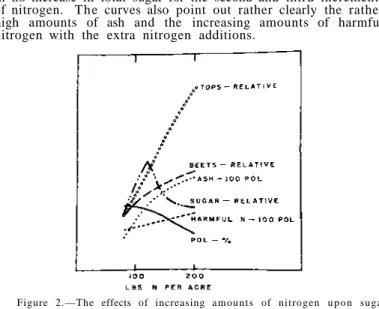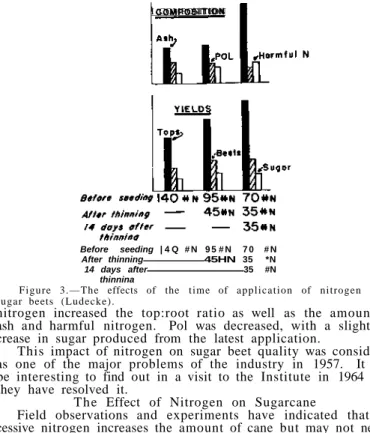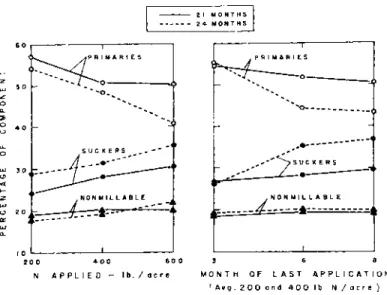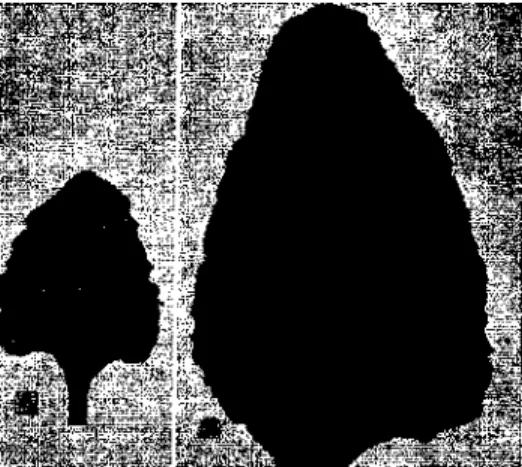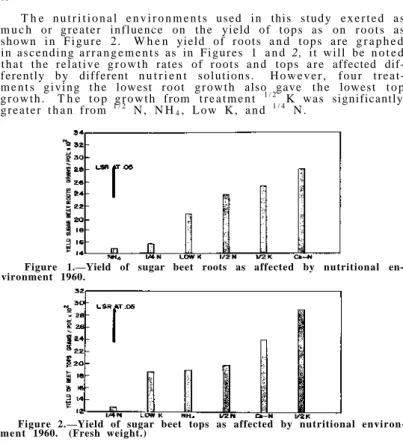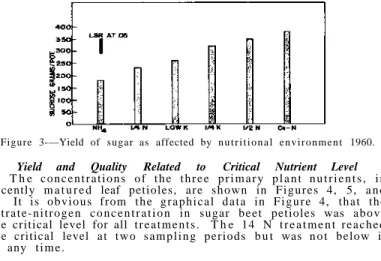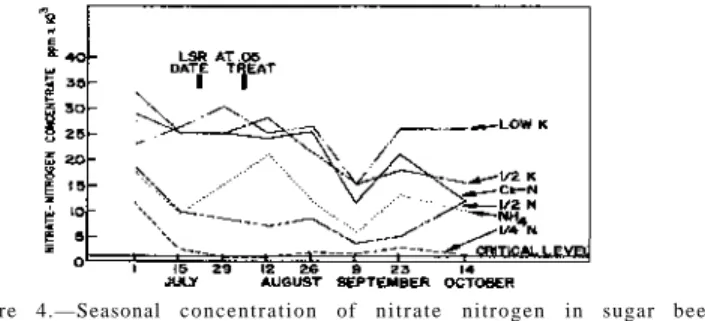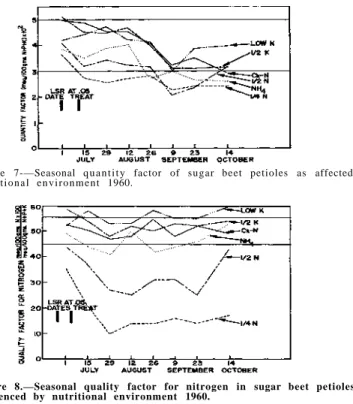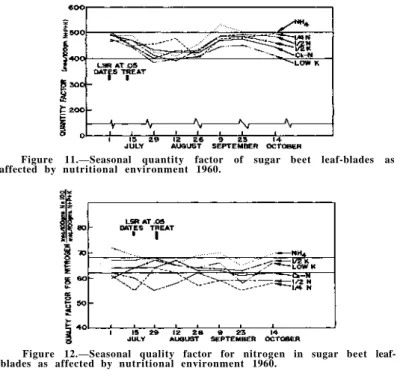Its main problem for most of the last four decades has been income. Increasing per capita income is one of the opportunities for agriculture in the coming years. After all, agriculture in the broadest sense accounts for about 40 percent of the national economy.
You are aware of the responsibilities of agriculture to the people of this nation and to the people of the world. If mineralizable nitrogen is released during the last stages of the plant's development, it can be difficult to ripen the crop. Sugar crops respond to high amounts of nitrogen eg giving increased tonnage of the plant, but a decrease in the percentage of sugar present.
Both factors had a detrimental effect on the pol and the extraction of the sugar. Both the amount and timing of nitrogen are important when assessing the impact of nitrogen on sugar cane4.
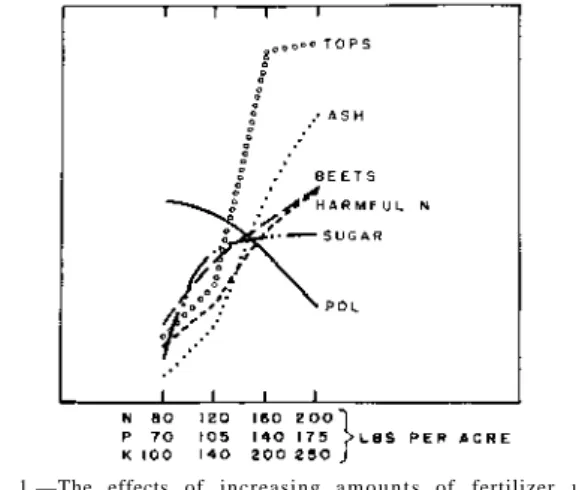
1, A P R I L 1964 3 1 Table 2.—Reduction in weight of sugar beet plants caused by severe (S) and common i (C) isolates of mosaic virus under greenhouse conditions. The results of the property studies show that the isolates are similar in the properties tested, indicating that they are strains of the beet mosaic virus. A research station in Salinas, California, indicates that this virus is likely to appear under different conditions in the form of a number of variants or strains that differ in virulence in sugar beets.
Highly virulent strains of this virus can cause a measurable reduction in sugar beet yield, especially if infection occurs in the early stages of beet growth. The range of symptoms described on leaves of different ages continues to appear as long as the affected plants are still strong enough. Figure 3 - Sugar beet leaves showing yellowing and necrosis caused by marble leaf disease on older leaves.
1 In tests 1 to 4, inclusive, 40 plants in 6-inch pots (4 plants per p o t ) were inoculated at the 4- to 6-leaf stage; in trial 5, plants (single) in 3-gallon pits were inoculated at the 10- to 14-leaf stage, and 10 plants were harvested after each indicated time interval. It is possible that a study of sugar beet varieties or significant climatic changes from those included in this study, with minor modifications of these suggested values.

A Rapid Method for the Routine Factory Analysis of Lactic Acid
1 An area of nine square meters was harvested, counted, and dried for the deferred crop 83 days after planting at Mitchell and 60 days afterward at North Platte. 1 An area of nine square meters was harvested, counted, and kiln-dried for deferred cultivation 83 days after planting at Mitchell and 60 days afterward at North Platte. Summary of weed surveys on sugar beets in Fargo, North Dakota, and East G r a n d Forks, Minnesota, conducted during the summer of 1948.
Be it further resolved that the management of all North American beet sugar companies be informed of the entire plan and request their joint cooperation in planning and receiving this fine group of visitors. The Chairman then requested a report from the Site Selection Committee appointed to select the city and hotel where the Fourteenth General Meeting of the Association would be held in 1966. Frakes reported that the Hotel Leamington in Minneapolis, Minnesota, was hereby proposed as the site for the Society's biennial meeting in 1966.
Following a proposal submitted, supported and unanimously adopted, Minneapolis and the Hotel Leamington were selected as the meeting hotel and host city for our fourteenth General Meeting of the Society in 1966. The President of the Society, on behalf of the Executive Committee and Board of Directors, has named Dr. Earl Coke, vice president of Bank of America, San Francisco, California, named recipients of the honorary membership award.
Earl Coke, were unanimously elected honorary members of the American Society of Sugar Beet Technologists for life. McCready, was in the process of counting ballots cast in favor of nominees for each of the offices of the society, such officers elected to hold office for the biennium 1964-65.
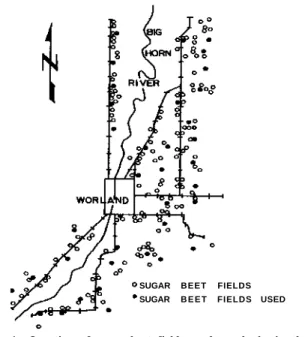
The Fate of Formaldehyde in Sugar Beet Juices
In this article, the term seed refers only to the true seed found in the fruit. 5 Trade names are mentioned for identification only and do not constitute a recommendation by the United States Department of Agriculture. Levels of T o t a l nitrogen, potassium and sodium in petioles and in thin juice of sugar beet 1.4 M E R L E O.
1 Cooperative Investigations of the Colorado Agricultural Experiment Station, Division of Crop Research, Agricultural Research Service. The Boswell Foundation administered by the Stanford Research Institute's Agricultural Research Center, the National Institutes of Health, the National Plant Food Institute, and contract research funds from the U.S. Agricultural Research Service. Approved by the Colorado Agricultural Experiment Station for publication as Scientific Series Article No.
Ralph Wood of the C.reat Western Sugar Company for taking thin liquid samples from a standard oxalate method with his company and at the Western Data Processing Center at the University of California at Los Angeles. T a b i c 1.-F values calculated from analyzes of variance for the levels of total nitrogen, potassium and sodium in the leaves of the leaves and in the thin juice.1. Tabic 2.-Means and least significant differences for levels of total nitrogen, potassium and sodium in petioles and sap.
Correlations of total nitrogen, potassium and sodium levels in petioles and rare sap with root weight per plot, percentage of sucrose and percentage of pure pulp. Study and economic assessment of the impact of nitrogen fertilization and selected varieties on the production and processing of sugar beet, f. The Boswell Foundation, administered by the Stanford Research Institute's Center for Agricultural Research, National Institutes;.
Ralph Wood of T h e Great Western Sugar Company for obtaining thin samples of juices by the oxalate method standard with his company and the Western Data Processing Center at the University of California, Los Angeles for using computing facilities for data analysis, job no.
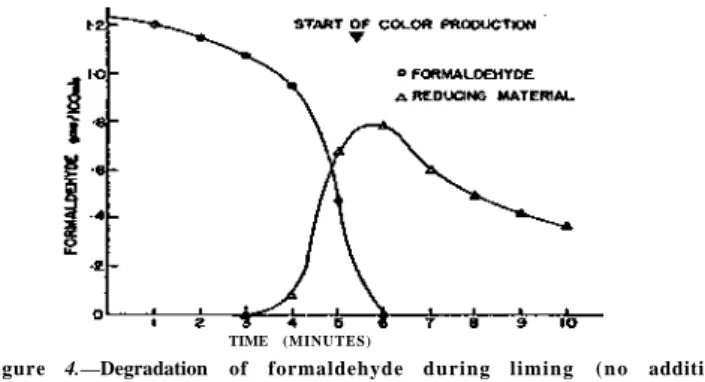
Variation in Emergence of Sugar Beet Plants Attributable to Different Drill Units
The amounts of thin juice for 1st effect and thick juice from 5th effect in plant #2 and #4 for r u n #4 were measured by Foxboro, model no. Heat transfer coefficients depend on the cleanliness of the surfaces on both the vapor side and the juice side, on the metal from which the pipes are made, on the ratio between the length and diameter of the pipes, on the temperature difference between the vapor side and the juice side, and finally on the brix of the juice and the temperature of the juice . The authors believed that the change was not the result of a physiological effect of the resistant plants, but that the resistant plants only served to select individuals that could reproduce on|.
In preliminary tests, populations of the sugar beet nematode were recovered from tomato and sugar beet previously inoculated with cysts from a single population. T Table 1.-Total number of adult Heterodera schachtii larvae and cysts recovered from roots and soil of tomato examined and 120 days after inoculation.1. 2 The numbers are the total number of nematodes recovered from 2 tomato plants sampled on the date indicated.
Reproduction of Heterodera schachtii on tomato increased during a short period of coexistence of this host and parasite. When a tomato-derived population was allowed to reproduce on sugar beet and the progeny were reinoculated into tomato, the number of adult nematodes obtained from the third transfer host was intermediate to the numbers obtained from tomatoes inoculated with populations selected from beets or tomatoes. (Tables 1 and 3). The data suggest that the reproduction of tomato-to-tomato selected populations was reduced during short association with sugar beet.
Association of beet nematode with tomato also appeared to reduce the ability to reproduce in sugar beet (Table 3). Since the results were comparable regardless of whether larval cysts were used as inoculum, the failure of nematodes to hatch from the cysts can be eliminated as a possible explanation for the differences in reproduction in sugar beet and tomato. Steiner (10) and others suggested that physiological adaptation may occur, but many of the cases cited are now known to be due to nematode species confusion or misinterpretation of field observations.
From a practical point of view, the existence of field populations of nematodes capable of attacking sugar beet and capable of increasing the ability to attack tomatoes is of importance, as it shows that tomatoes should not be used in rotations with sugar beet, and also suggest that tomatoes grown on former sugar beet fields can increase the nematode population. The development of sound rotation practices and effective breeding programs to control the sugar beet nematode depends on an understanding. 1Contributed by the Department of Agronomy and Colorado Seed Laboratory, Colorado Agricultural Experiment Station, Fort Collins, Colorado: Colorado Agricultural.
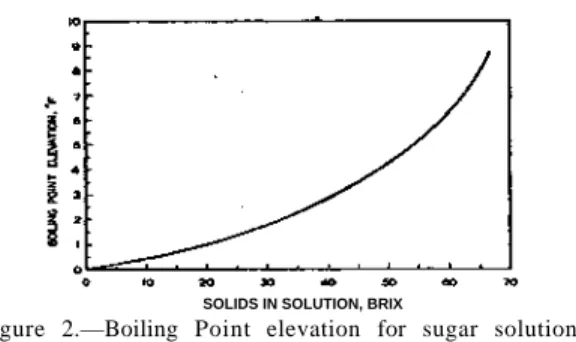
Sucrose Determination in Sugar Beets Using Paper Chromatography and Spectrophotometry 1
Effect of phenol concentration on the absorption capacity of the phenolic condensation products of sucrose and raffinose.
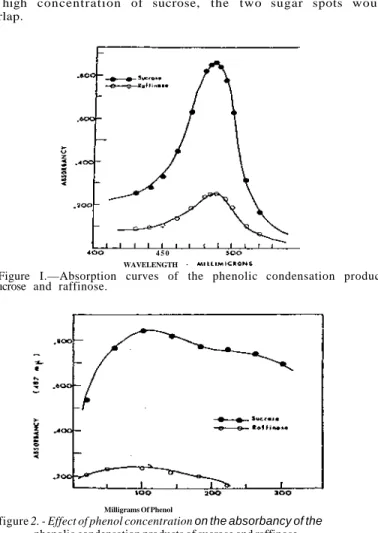
Beet Pulp in All-Barley Rations
